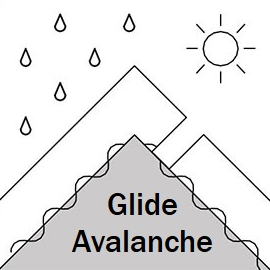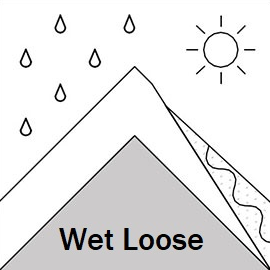Gudauri
Natural avalanches are unlikely, human-triggered avalanches are possible. Small avalanches in specific areas, or large avalanches in isolated areas.
With milder temperatures and and a chance of strong solar radiation, we expect an increase in the likelihood for wet loose avalanches and glide slabs in the later part of the day, especially in the alpine and sub-alpine. If the sun comes out, steep solar (SW,S,SE) slopes should be avoided in the afternoon. The wind slab from the previous days has probably stabilized, but may still be reactive to skier-triggering in steep terrain. Also take care where the snowpack is rocky, shallow and steep, as the recent cold snap could have promoted facet (weak layer) formation there.
Forecast issued at: 18 January 2024 23:00
Forecast valid until: 20 January 2024 23:00
Forecaster: Peter S
High Alpine
> 2600m
1 Low
Generally safe avalanche conditions. Watch for unstable snow on isolated terrain features.
Alpine
2000m - 2600m
2 Moderate
Heightened avalanche conditions on specific terrain features. Evaluate snow and terrain carefully; identify features of concern.
Sub Alpine
< 2000m
2 Moderate
Heightened avalanche conditions on specific terrain features. Evaluate snow and terrain carefully; identify features of concern.
Avalanche Problems
Glide

With mild day time temperatures, we expect glide cracks and full-depth glide avalanches to remaim active. They are common around several places, and will be with us for the rest of the season. These avalanches can release randomly on all aspects, even at night, although rapid warming makes them more likely. Do not stop under steep areas if there are cracks above you. Remember that new snow or wind-drifting can disguise these cracks.
| Sensitivity | The specific avalanche problem type is reactive to human rider triggers. Easy to trigger with ski cut. |
| Distribution | A few, isolated locations; evidence for instabilities is rare and hard to find. |
| Time of Day | All day |
| Trend | Deteriorating |
| Confidence | Moderate |
Loose Wet

Mild temperatures may lead to natural or skier-triggered wet loose avalanches in steep terrain, especially in lower elevations. To what extend wet loose are a problem tomorrow will depend on the amount of solar radiaton.
| Sensitivity | The specific avalanche problem type is reactive to human rider triggers. Easy to trigger with ski cut. |
| Distribution | Specific areas, with common characteristics. Evidence for instabilities exists, but it is not obvious and finding it requires careful observations. |
| Time of Day | Afternoon |
| Trend | Deteriorating |
| Confidence | Moderate |
Wind Slab

| Sensitivity | The specific avalanche problem type is difficult to trigger with a human rider. |
| Distribution | A few, isolated locations; evidence for instabilities is rare and hard to find. |
| Time of Day | All day |
| Trend | Improving |
| Confidence | Moderate |
Persistent Slab

Weak layers associated with melt-freeze crusts or density changes have been found in a couple of spots recently, and the recent cold temperatures made the layers weaker. These weaknesses probably need a large load to set them off, although they now have more snow above them which is adding weight. Probably only found in isolated areas, although there is still uncertainty about this, and we need more information.
| Sensitivity | The specific avalanche problem type is difficult to trigger with a human rider. |
| Distribution | A few, isolated locations; evidence for instabilities is rare and hard to find. |
| Time of Day | All day |
| Trend | No change |
| Confidence | Moderate |
Recent Avalanches and Snowpack
Avalanche Activity: 16th January - Skier triggered size 1 wind slab, 2500m, NE aspect Milioni valley, 20cm deep, 20m wide, ran 5m off a steep bank. 13th and 14th January - A few new glide slabs reported, up to size 2, various aspects below 2500m
Weather
Disclaimer
Our avalanche forecasters are internationally qualified and experienced professionals, and data is provided by skilled observers. We encourage you to make your own observations and decisions, without relying solely on our forecast, since any forecast is a generalised 'best guess', and in certain cases it might be inaccurate. We can not be held liable for any actions you take in the backcountry that may result in injury, loss or death.